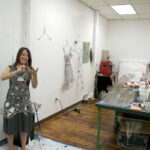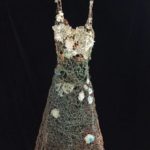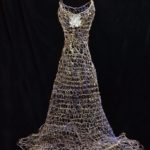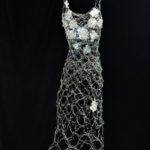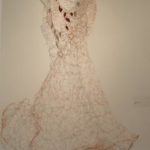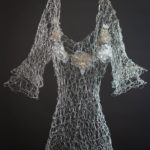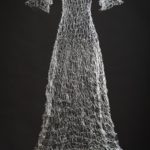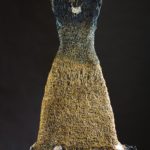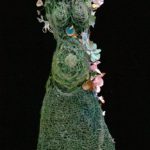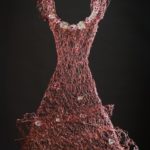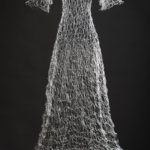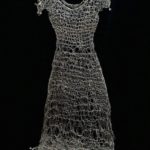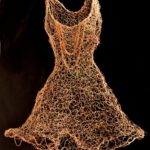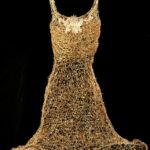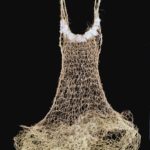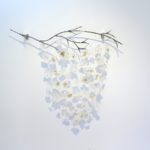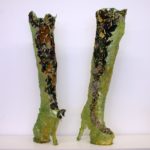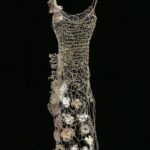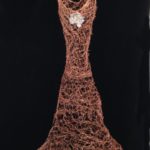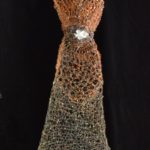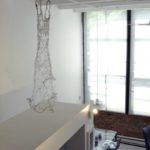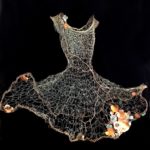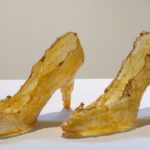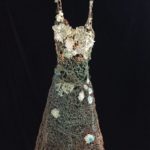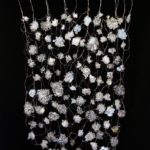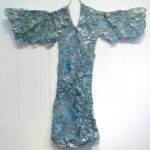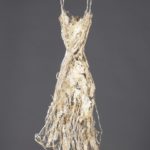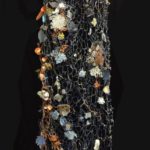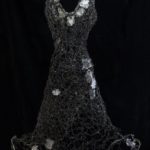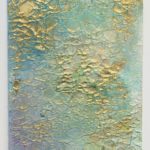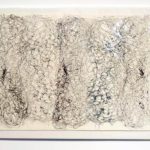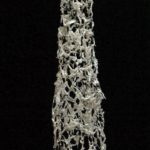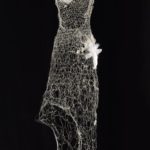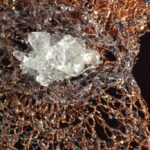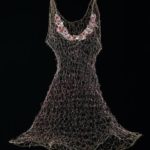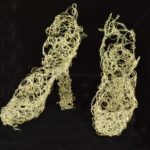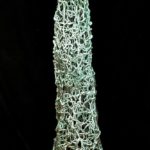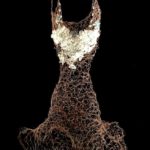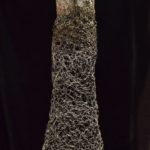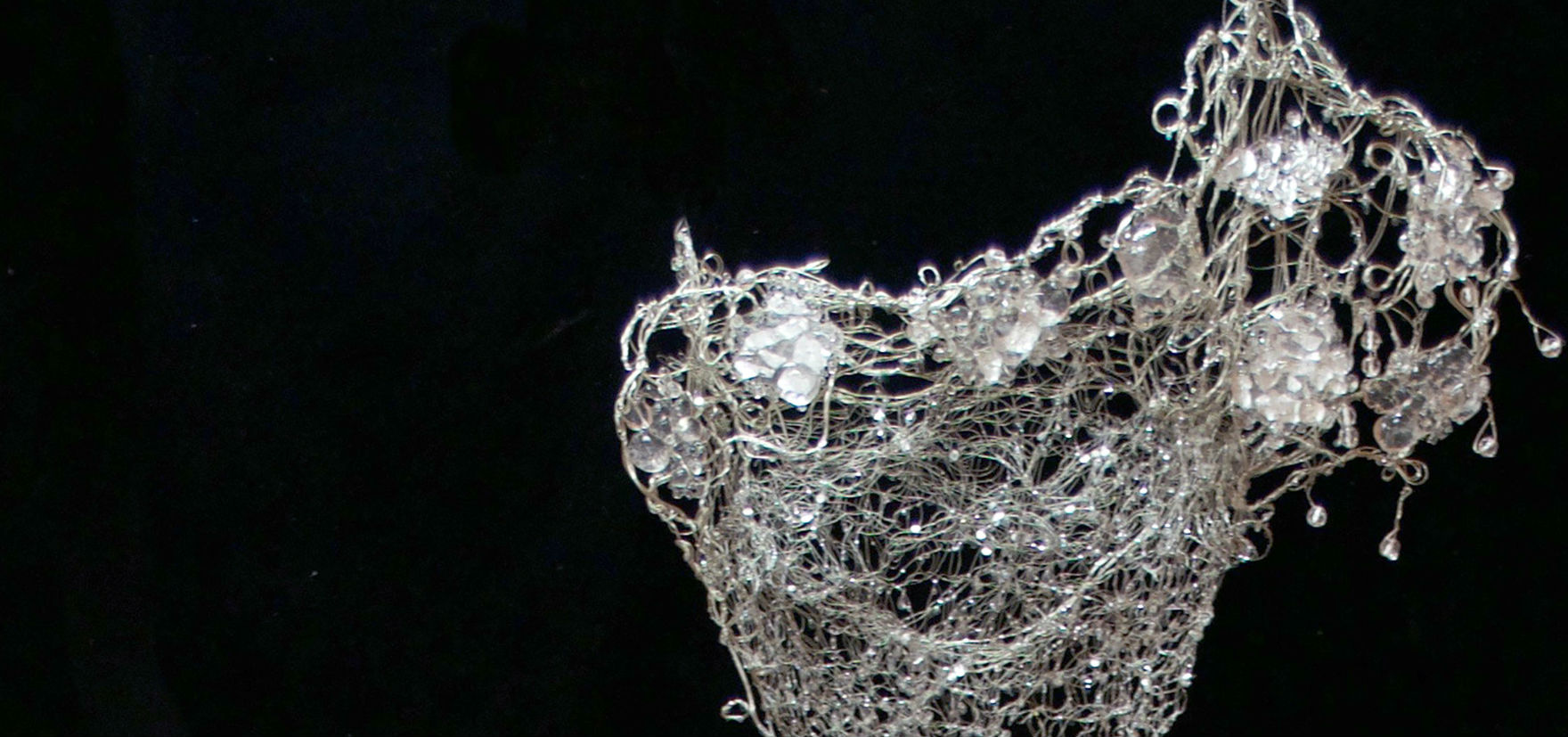
Artist Bio
Susan Freda is a sculptor and jeweler known for her organic, ephemeral, intricate style. She employs form, light, and lines to create her airy, kinetic, luminescent pieces. Her work is recognized for its unusual processes, signature weaving, and for its delicate, exquisite craftsmanship.
She received her BFA from the Rhode Island School of Design (RISD) and, in 2009, her MFA from Massachusetts College of Art and Design. She has been the recipient of a Pollock-Krasner Foundation Award, a Rhode Island State Council on the Arts Public Art Grant, a Pilchuck Glass School Scholarship, and a de Young Museum Artist-in-Residence Award for 2009.
Susan has exhibited in the U.S., Canada, England, and Italy. Her shoe and dress forms have been collected and presented at N.Y. Fashion Week, Stuart Weitzman, Neiman Marcus, Fidelity Investments, Meditech, Ferragamo, Cirque du Soleil, and by the San Francisco Museum of Modern Art Artists Gallery. Her work is included in the collection of the Museo Italo Americano of San Francisco, and in numerous private and corporate collections.
Susan feels that artists cherish a special social responsibility to each other and to the planet–and that it is important for them to make the smallest footprint possible, in work and in all aspects of business. In works such as hers, examples of this view appear in the use of recycled metals, conflict-free diamonds, and responsibly sourced stones. In addition, for one-of-a-kind jewelry and sculpture, she favors recycled diamonds, gems, and gold from family pieces.
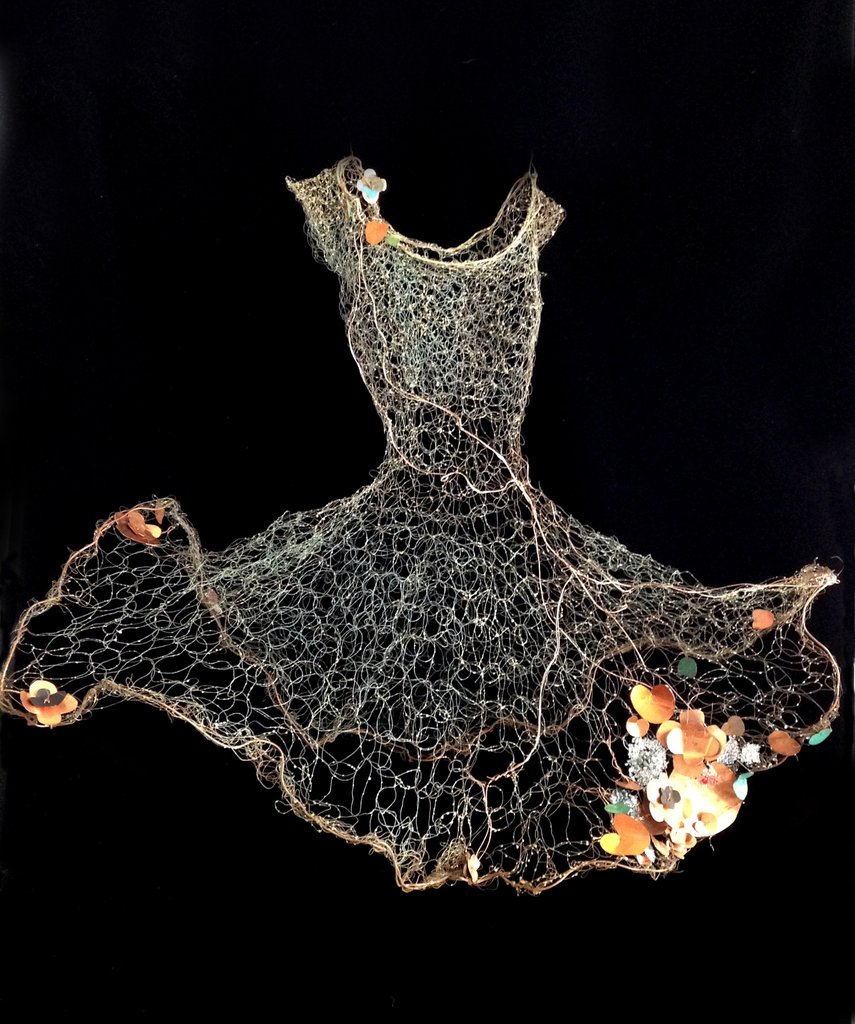
INTERVIEW
Artist: Susan Freda
Do you remember the moment you realized you would spend your life as an artist?
When I was a child I painted, built clothing for my dolls, made jewelry, and drew. For me, it was all art-making. From around age ten I thought I wanted to be a fashion designer or an artist. I’ve been working toward that goal ever since.
Can you tell us about your process?
The dresses are hanging in the studio, and I walk around them, weaving into them, adding glass, making notes about the colors, materials and techniques that they will require. I sometimes refer to inspirational textile images from the turn of the century, or look to the early days of film for concepts and forms. I also look at botany for inspiration.
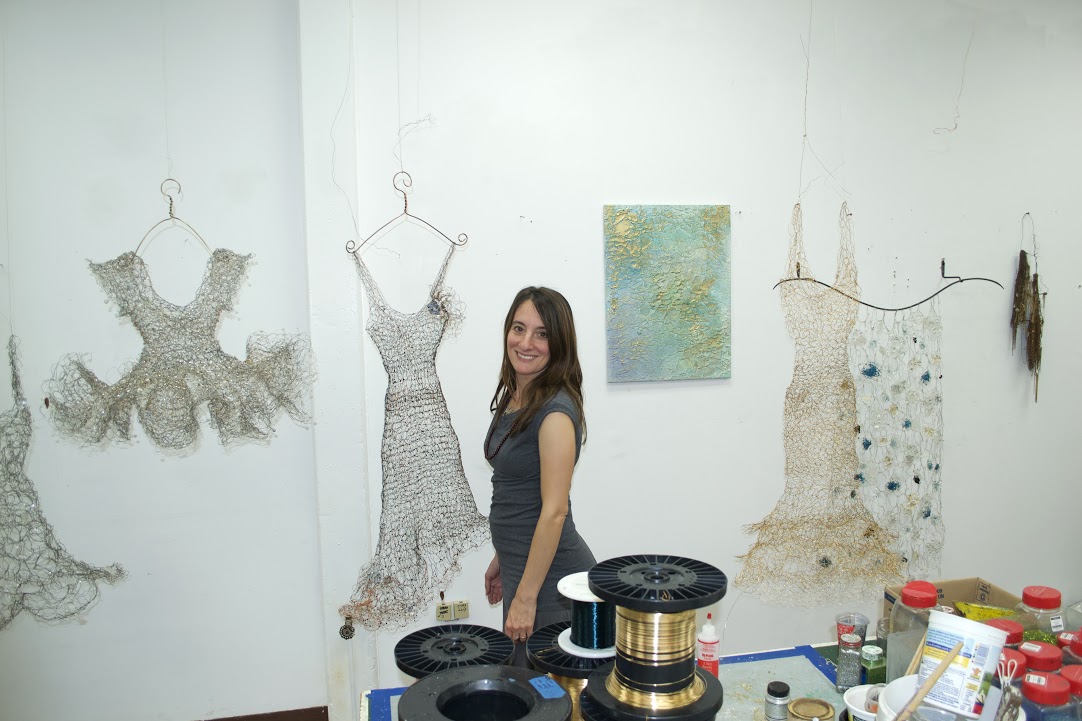
Your sculptures combine materials such as steel wire, gold, silver, vermeil, crystal, glass, resin, and handmade paper. How did you come to use those materials and what are some of the challenges they present?
I began my education at the Rhode Island School of Design in the jewelry department. I soon switched to sculpture, but the foundation of working with small-scale metals stuck with me. I have loved wire from early days. I found that it served many of my needs because it was such an immediate material, allowing itself to be shaped by hand and holding form. I gravitate toward materials that do not require power tools. I like to work in a quiet way. Of course, I also choose my materials for their inherent beauty. Glass, gems, precious metals all have such beauty! They are a pleasure to work with. I discovered glass years ago through an artist friend, Gillian Puryear, who was a glassblower. From there, I took classes at Urban Glass and Pilchuck Glass School to learn how to create the organic and snowflake-like forms that I was visualizing. I discovered papermaking while on a grant from the Pollock Krasner Foundation in the Hudson Valley. There I took classes with the Women’s Studio Center to learn all about handmade paper. The challenge with many of these materials is patience and a devotion of time and focused consideration.
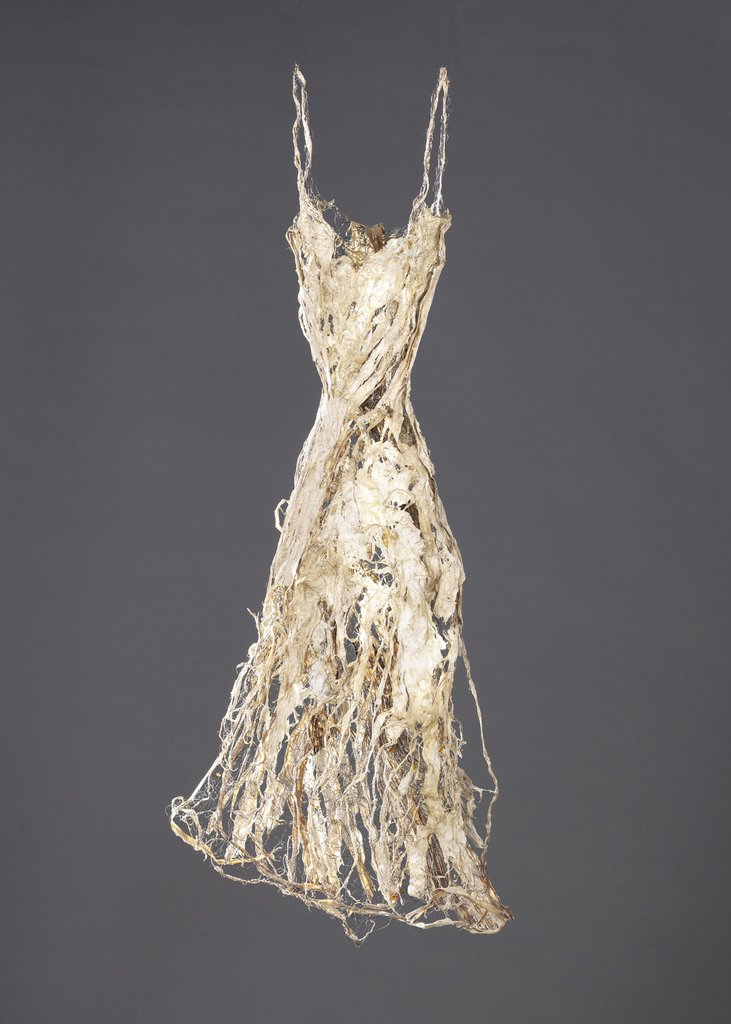
Who are some of the artists, writers or musicians, either past or present, who have inspired you?
My favorite musicians are Bob Dylan and Patti Smith. Among visual artists, Eva Hesse, Joan Mitchell, Judy Pfaff and Lynda Benglis inspire me.
What are you doing when you’re not creating?
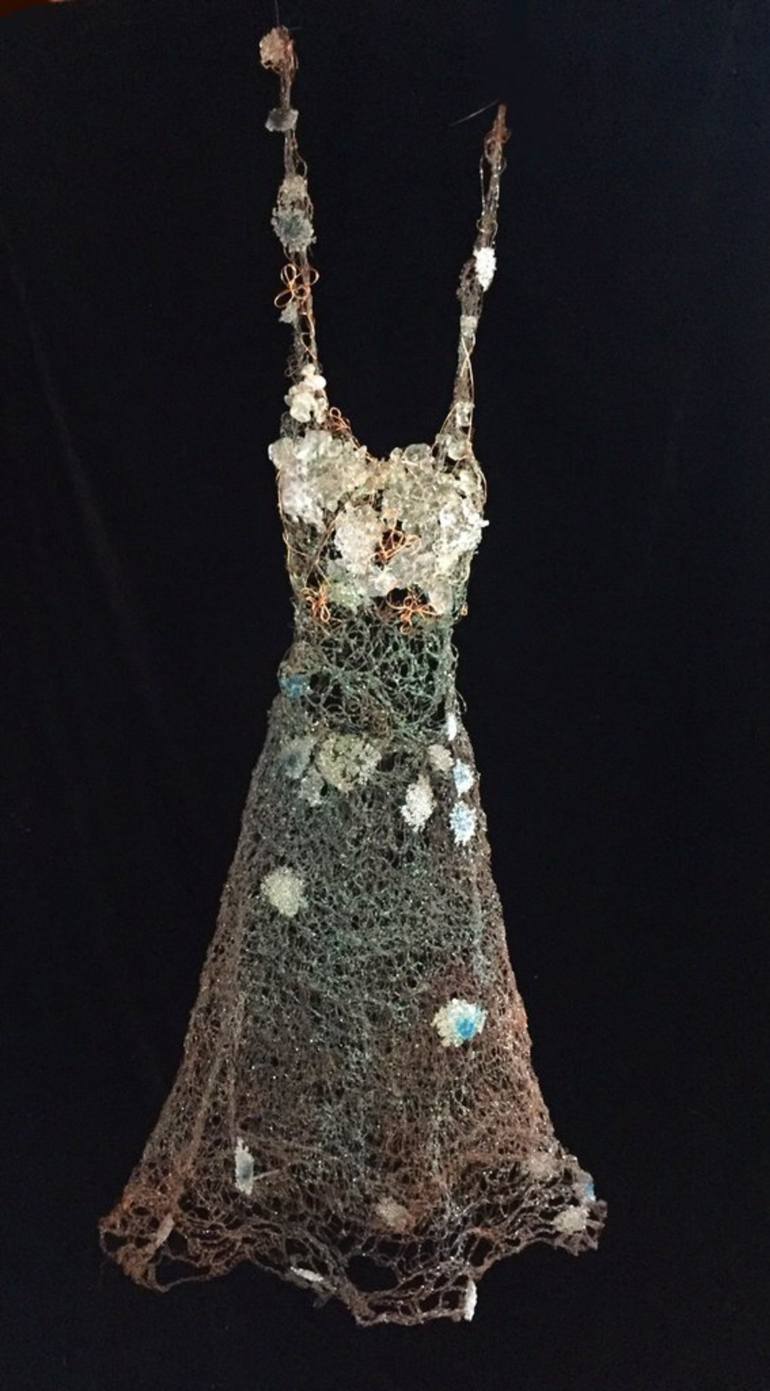
Name an experience that was worth your time.
My college education at RISD was well worth my time. It broadened my horizons exponentially. It gave me access to such a wide world of art, talent, history, and so many ways of “making.” It taught me how to think.
You are still young. You have exhibited in America and Europe and worked for the best fashion brands around the world. Your work has been acquired for very famous art collectors. What exactly does the word “success” mean to you?
“Success” for me is being able to create art freely with enough income from the work to spend my time “making.” I appreciate having time to consider the environmental and humanitarian impact of my work. It also means time for travel and time with my family. The recognition of art galleries, awards, publications and the fact that people collect my work are things that contribute to my sense of accomplishment.
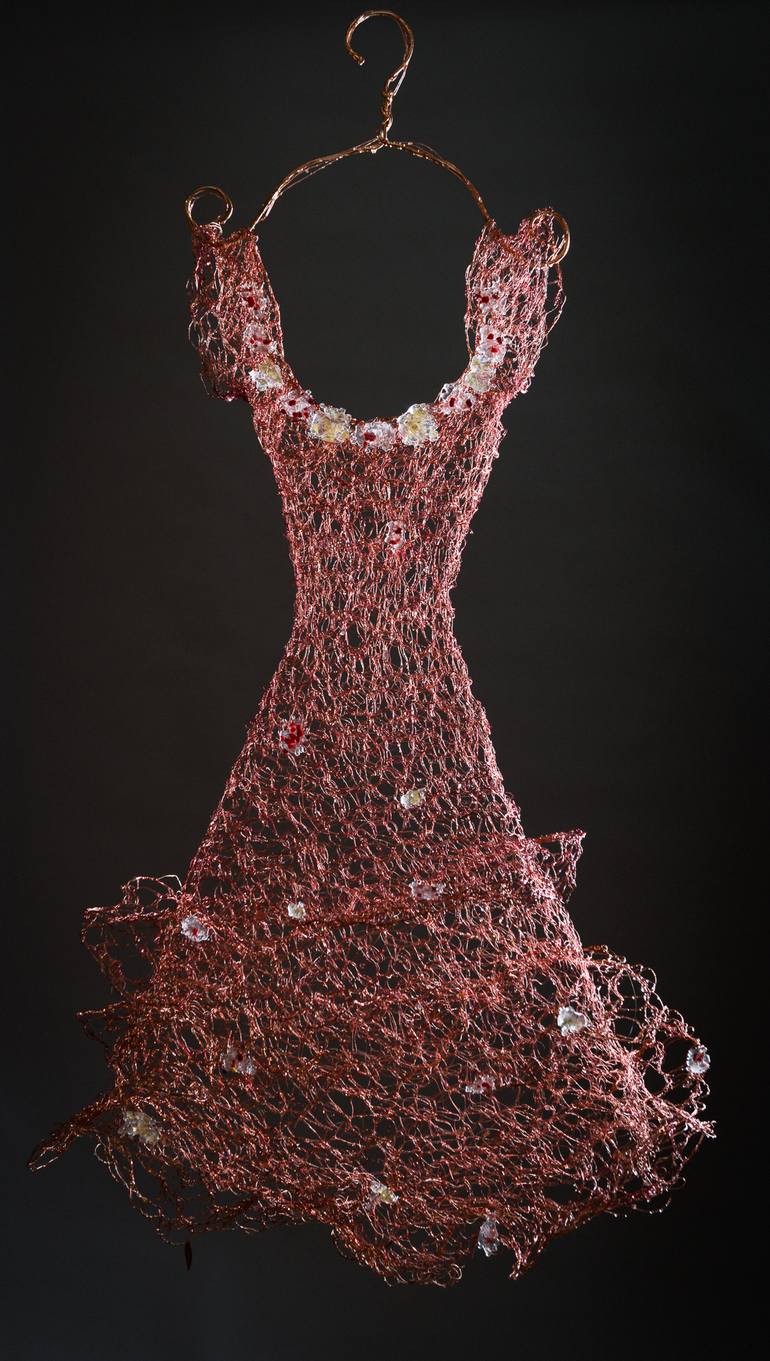
What are you working on now, and what are your plans for the future?
I’m working on creating large-scale dresses and wall tapestries with more detailed botanical and glass components. I hope that these forms reference the natural landscapes that exist like tapestries in my mind. I hope that my work connects viewers with networks of things like the glowing solar system, sparkling stars, planets and lush gardens. Also, I hope one day to create environments in gardens where art is incorporated into the landscape and coexists with trees and flowers, enhancing and co-creating the beauty of nature.
